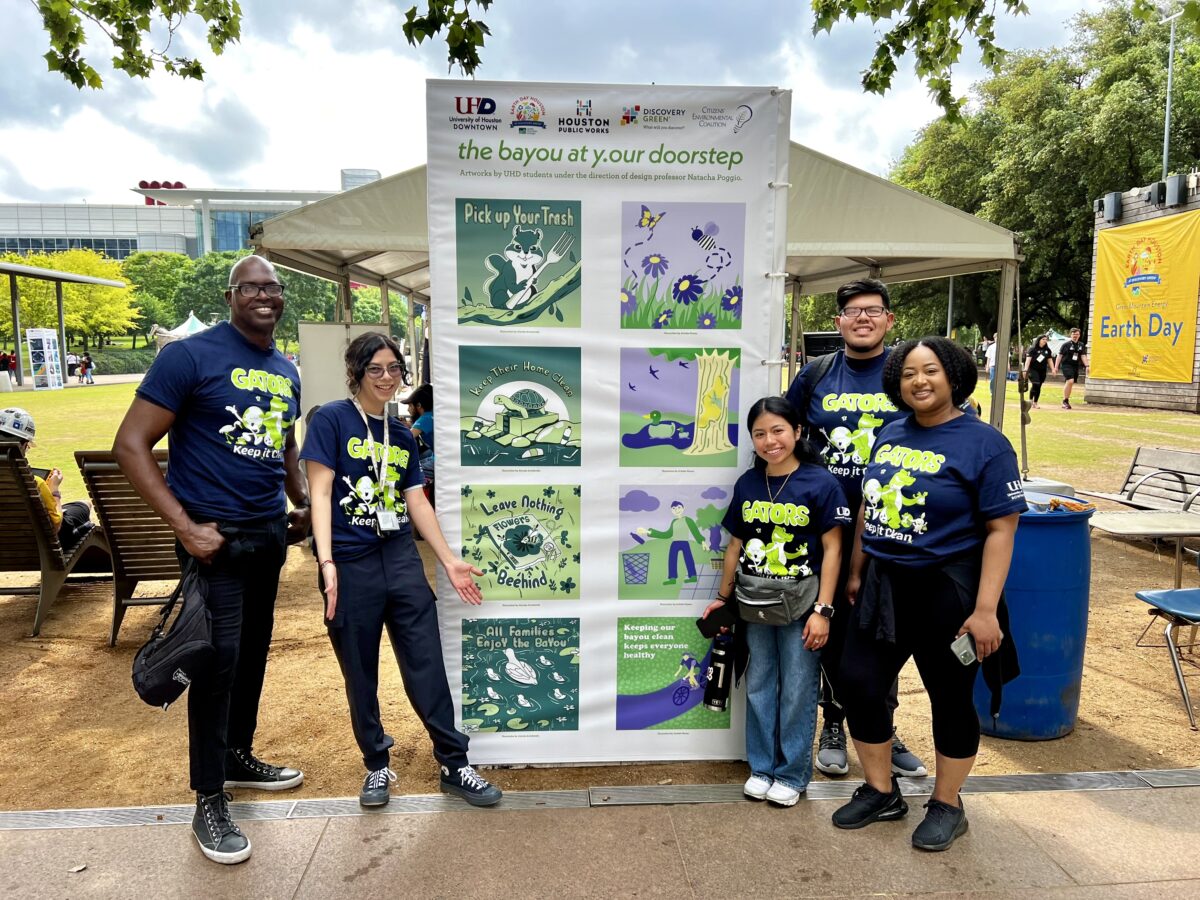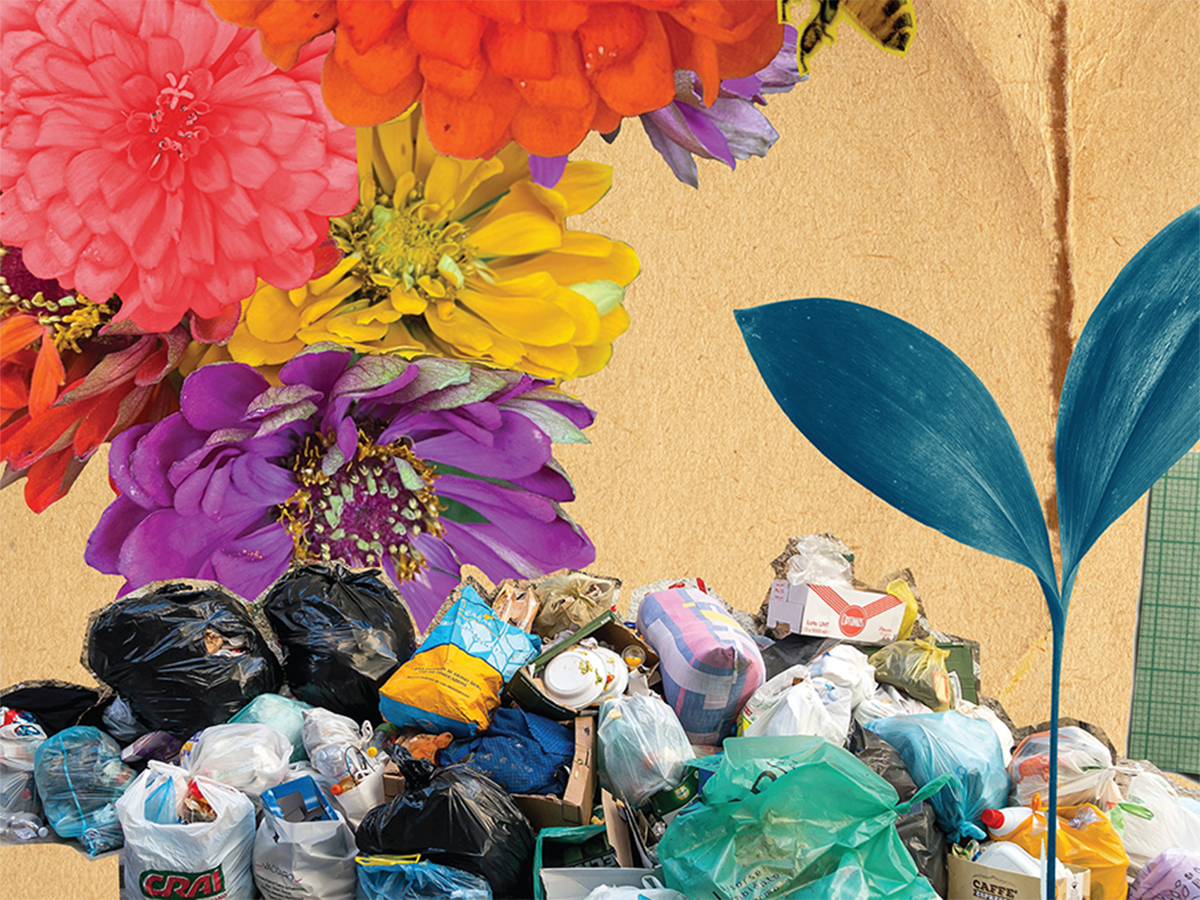Natacha Poggio
Associate Professor
University of Houston Downtown
Houston’s vast network of 22 bayous and river systems is central to the city’s identity, influencing both its geography and culture. The University of Houston-Downtown (UHD) sits at the intersection of two key waterways, White Oak and Buffalo Bayous, offering students a direct connection to the natural environment that shapes their urban experience. These bayous, which embody both tranquility and the destructive potential of floods, also highlight the impact of human activity on Houston’s green spaces.
In an introductory graphic design course, students were tasked with visualizing the environmental, emotional, and developmental importance of Houston’s bayous for community well-being. Through this service-learning project, they collected observations and interviewed community members to apply their storytelling and visual design skills to create illustrations that reflect the role Houston’s waterways play in the community, while also addressing the negative effects of pollution.
The project culminated in a public exhibition at Earth Day Houston, in partnership with Discovery Green. With over 31,000 attendees, the displays aimed to raise awareness and educate about the importance of reducing pollution, particularly single-use plastics, as part of a larger goal to achieve a waste-free celebration. UHD Recycling Ambassadors played a significant role in this effort, collecting and sorting 3,800 pounds of garbage, with less than 9% ending up in a landfill.
This case study demonstrates the power of integrating environmental education into design curricula, engaging students in creating relevant real-world solutions through service-learning and empowering community members alongside the students’ learning experience.
This design research is presented at Design Incubation Colloquium 11.2: Annual CAA Conference 2025 (Hybrid) on Friday, February 14, 2025.

